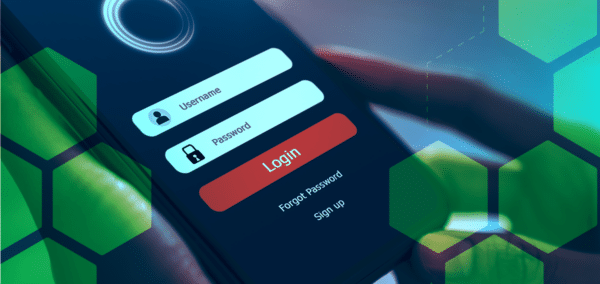An operational data platform (ODP) supports companies in performing user-centric operational analytics, giving them the capability to get a true real-time lens into everything impacting user experience, and enabling them to monitor, manage, and optimize user interactions as they happen.
Conviva has built the first customer-centric operational data platform on the market, connecting backend infrastructure performance to front-end revenue generation and everything in between, across applications, networks, platforms, devices, access points, and more. Unlike current observability solutions that limit their focus primarily to infrastructure performance metrics, the Conviva ODP connects the dots between what’s happening in real-time with customer experience to what companies are seeing on their back end, so they can immediately identify whether they have a problem with their app or streaming and how to solve it.
How Do Companies Benefit from an Operational Data Platform?
The world’s first operational data platform helps customers drive the critical results they need to optimize their business.
- Lower MTTR
An ODP offers AI alerting on issues companies might otherwise not have noticed, allowing them to pinpoint errors for faster mean time to resolution (MTTR). - Increase Streaming Minutes
Thanks to comprehensive content delivery network (CDN) monitoring and management capabilities, an ODP guarantees companies are delivering the best experience for every viewer. - Increase Ad Impressions
The Conviva ODP continuously tracks multiple standard and custom metrics to measure and improve viewing experience. An ODP is also capable of measuring all user events in context, at scale, and in real time, meaning it can empower businesses to make small adjustments that have direct impact on ad revenue. For example, AtresMedia discovered an additional $4.4M in advertising revenue by implementing new ad units during video pause time. - Promote Engagement
ODP users can use Conviva’s SPI to discover opportunities for improving experience and performance to counteract churn, and support user engagement and retention. - Simplify Tech Stack
An OPD is intended as a complete replacement for all traditional observability and analytics tools, since it provides comprehensive measurement, monitoring, and alerting on all video and app data. This allows businesses to streamline their toolset and preserve budget, while directly improving their ad and subscriber revenue opportunities.
How Operational Data Platforms Work
Nearly everything you want to know about your operations is a stateful question, meaning you need to be able to examine events in context, understand cause-and-effect, and drilldown to isolate root cause – all of which is way beyond what business analytics and sample-level analytics can do today.
An operational data platform is built to handle stateful analytics, taking into account every event, every sequence of those events, and the changing states of those events throughout the duration of those sequences to create accurate and actionable insights. As you can imagine, this level of analytics demands sophisticated technology, which is why an operational data platform is built on an entirely new technology, computational model, and query language when compared to traditional observability and analytics tools.
- Universal Data Ingestion
ODPs perform real-time and comprehensive ingestion without data sampling from multiple sources. Conviva’s ODP has the additional benefit of relying on a tiny, 45KB sensor to achieve this total data-capture. - Advanced Event Contextualization
An operational data platform converts the endless stream of raw event data into useful contextual sessions for analysis such as “successful purchase” or “searched for content.” - Custom Metric Builder
While also coming preloaded with standard metrics that will be broadly useful to many digital businesses, the best ODP is built to accommodate what matters for each company. The custom metric builder allows you to set up an almost infinite set of metrics that reflect important events for your business, such as the time it takes users to subscribe, the number of users able to log in successfully, and more. - Real-time Actionable Insights
Rather than forcing you to perform manual analysis, run complicated queries or decipher confusing dashboards, an ODP is built with an interactive UI to support almost instant analysis and drill down to issues that negatively impact metrics, with full context for root cause analysis. - AI Alerts
Operational data platforms help you work more intelligently, with AI-driven alerts surfacing anomalous events and pointing out key issues that might otherwise go completely unnoticed. - API Integrations and Data Feeds
As part of your essential business tech stack, an ODP can easily share and exchange data with any system, anytime, through robust APIs and daily or hourly data feeds.
Differences Between Operational Data Platforms and Data Warehouses
An operational data platform is not a replacement for your data warehouse, but instead an essential partner, allowing you to achieve both operational analytics to resolve issues in the moment, and business analytics so you can achieve long-term strategic improvements. Ideally, an ODP feeds census-level data and stateful analytics directly to your data warehouse for historical data storage and business reporting.
- Data Time: Operational data platforms primarily deal with real-time or near-real-time data. They are designed to handle data as it’s generated, making them ideal for immediate decision-making, monitoring, and analyzing current operations. Data warehouses, on the other hand, are optimized for historical data storage. They aggregate and store data from various sources over time, making them well-suited for complex reporting, trend analysis, and historical performance evaluations.
- Data Latency: ODPs aim for minimal data latency. They process and provide data in real-time or with very low delays, making them ideal for applications that require immediate insights, such as real-time monitoring and alerting. Data warehouses typically involve batch processing, which means data is collected, processed, and loaded periodically, often on a daily, weekly, or monthly basis. This results in higher data latency compared to operational data platforms.
- Data Schema and Structure: Operational data platforms are flexible when it comes to data schema and structure. They can handle both structured data, such as information tables, and unstructured data, such as images, videos, and emails, making them suitable for capturing a wide range of data types and formats. Data warehouses have a predefined schema optimized for analytical queries. Data must be structured and conform to this schema, which may require significant data transformation before loading into the warehouse.
- Scalability: ODPs are designed for high-speed data processing. They excel in handling real-time data and can accommodate rapidly growing workloads. Data warehouses are optimized for complex queries and reporting. However, since they do not process data in real-time, more effort may be required to scale in order to handle large data volumes or frequent updates.
Differences Between Operational Data Platforms and Operational Data Stores
Another operational solution you may have heard of is an operational data store (ODS), or a centralized data storehouse that supports real-time operational reporting with snapshots of the latest data from multiple systems. You might also think of it as a staging area for data to be organized, synthesized, normalized, etc., for feeding into a data warehouse. An operational data platform is similar in that it also ingests the latest data from multiple sources and systems, and can prepare that data to be used in a data warehouse. However, the major difference between an ODS and an ODP is that the latter can perform intelligent, real-time, user experience monitoring at scale, as well as root-cause analysis to support your DevOps teams. An ODP helps tremendously in pinpointing and solving performance problems that directly impact experience and therefore engagement for your users.
Test Drive the World’s First and Only Operational Data Platform with Conviva
In today’s fast-paced business environment, an operational data platform isn’t just a tool – it’s a strategic asset for digital businesses. By leveraging real-time data and the world’s most sophisticated user-centric observability and analytics solution, organizations can unlock new opportunities, gain a competitive edge and thrive in an ever-changing landscape.
If you feel an ODP is right for you or your company, talk to a Conviva expert and explore the possibilities with Conviva’s operational data platform today!




